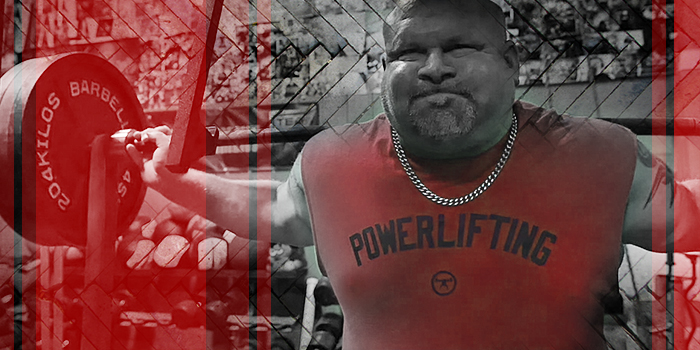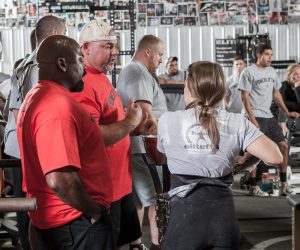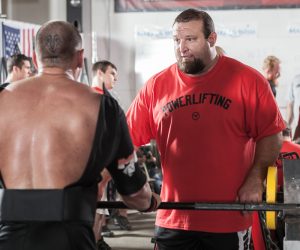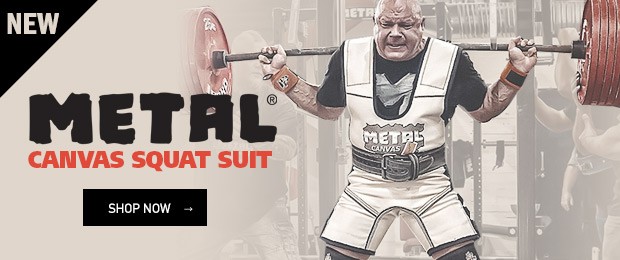
When I started in powerlifting 20 years ago, things were much different than they are today. There has been an evolution of powerlifting from lifting before gear was created, to the creation of the first blast shirts and squat suits, to now.
The gear in the beginning was equal to that of the single-ply poly Inzer Blast Shirt and Champion Squat Suit. Then came multi-layered shirts and suits, then we moved onto denim and canvas. By the time I started, denim and canvas were popular. Now we are in a time where there is a return to lifting without gear, and powerlifting is divided into those who lift in gear and those who do not. (This isn't to say that the powerlifters themselves are divided, just that there are more choices as to how you can choose to participate.)
Is there really a difference between the two? When a lifter performs a squat, does the lifter not take the bar out, stand erect, descend to a point where the crease of the hip breaks parallel with the top of the knee, then return to an upright position? In the bench, does a lifter not take the bar out at arm’s length and lower the bar until the bar is motionless on the chest and then press the bar to lockout? And with a deadlift, does the lifter not grab the bar and stand up with it? Are these not the same for both geared and raw lifting? The answer is yes, they are the same. So why do so many lifters try to reinvent the wheel and separate the two?
RECENT: What Is Elite in Powerlifting?
When I was at Westside, I was instructed on all aspects of training — form, max effort, repetition, GPP, dynamic effort, and identifying weaknesses, to name a few. Whether you choose to train using Westside methods, 5/3/1, progressive overload, or any of the many training programs out there, or whether you choose to train raw or equipped, one thing will always be the same no matter what: sticking points, weaknesses, and how to overcome them. The importance of properly identifying your weaknesses and how to make them strong is key.
Whether or not a lifter uses gear should not change how a lifter trains. For the first 20 year of lifting I used gear. At least for now, after many surgeries, I do not use gear. My training has not changed at all. I train the exact same way raw that I did when I wore gear. Why? Because at the end of the day, training is about getting stronger. As you train, the gear doesn’t get stronger — you do. In order to be a good geared lifter, the foundation under the gear must be strong to withstand the pressures of the gear.
I will admit, as a geared lifter, I was always looking for the next best thing in gear that might add pounds to my squat, bench, or deadlift. Each time I made adjustments it seemed as if I had to increase assistance work somewhere to accommodate the change. Likewise, each time I increased gear, my raw lifts also went up.
WATCH: Table Talk — Problems with Gear and the Qualities of Great Powerlifting Coaches
One of my favorite things to watch and do is drag racing. I love cars and speed. Drag racing has many similarities to powerlifting. The short bursts of power to propel the car down the track much like the burst of power to lift maximal weight. The adjustments made to the car to maximize speed much like the adjustments made to our form to maximize weight lifted.
We train to build strength like a mechanic assembles a powerful motor. And much like the raw vs gear decision, a mechanic can choose motor vs nitrous. If he chooses nitrous, he makes a few adjustments to timing and runs with nitrous. If not, he makes the proper adjustments to timing. He does not scrap the entire motor just because he made the switch. Much like powerlifting, the training is the same for both geared and raw. You reevaluate weaknesses and adjust accordingly.
When training for powerlifting or to get stronger, I was taught you have strength builders and you have strength testers. When training my deadlift, my strength builders were variations of good morning and low box squats for max effort. For assistance work, glute ham raises, leg curls, reverse hypers and abs were done every workout as a base. My strength testers were deadlifts from pin one and a reverse band pull. Four out five max effort workouts were a strength builder. About every fifth week I would test and determine if I was on a correct path to a PR at the next meet. When testing, you can then identify if you are properly addressing weaknesses and assess if new weaknesses need to be addressed.
Whether or not you wear gear shouldn't determine how you train — weaknesses should determine how you train. Identify your weaknesses and determine which exercises are needed to increase strength.













2 Comments